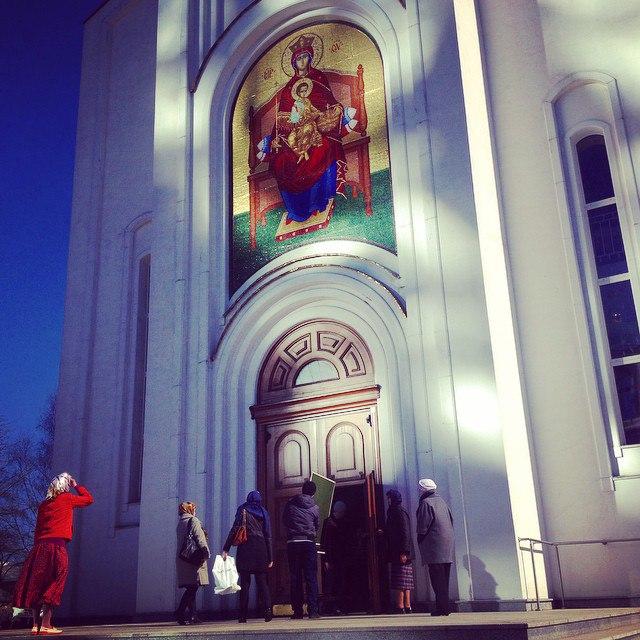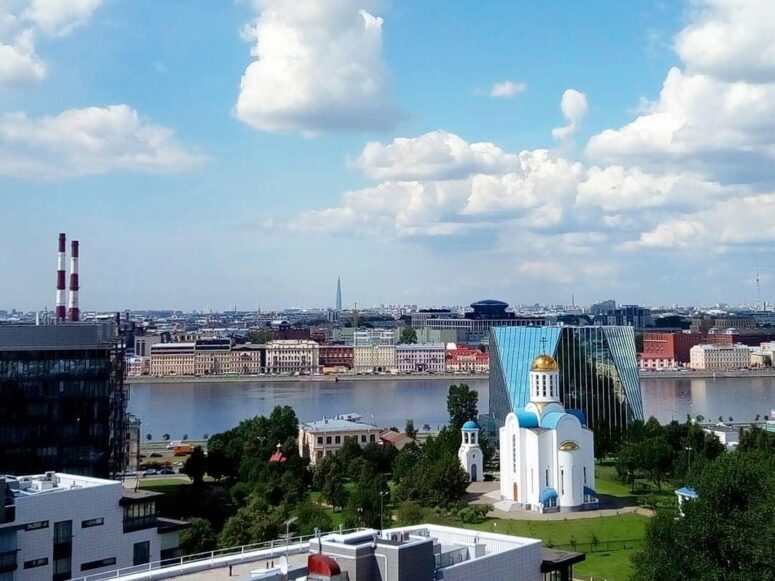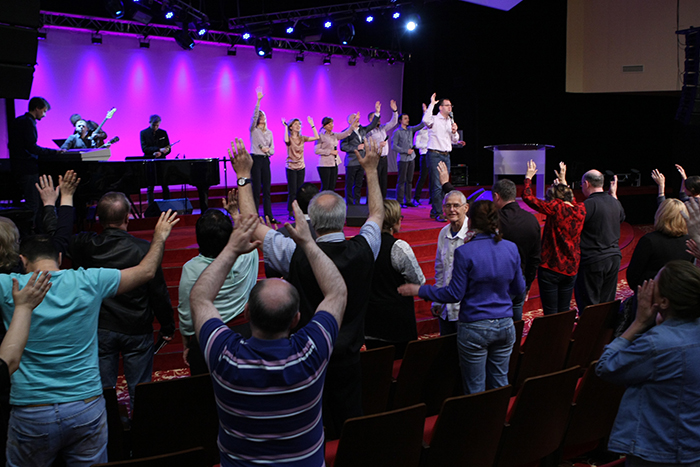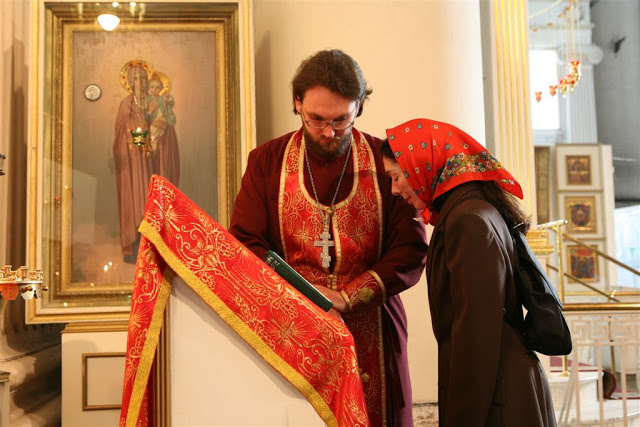
This church in St. Petersburg is called “Siege Church”, because it was built in the early 21st century in memory of the city residents who died in the terrible days of the Siege of Leningrad. The altar part of the church is made up of bricks that bear the names of Leningrad citizens who passed away during the long blockade of the city. In addition, the church has a unique museum dedicated to the service of the Orthodox Church in besieged Leningrad. The 900 days of siege taught many people the kindness and ability to sacrifice themselves for their neighbors. They revived and strengthened their faith in God. This is what Archpriest Alexander Pashkov, rector of the Church of the Assumption on Malaya Okhta, tells.
During the blockade years, daily divine services were held in ten churches in the “Cradle of the Revolution” (a favorite Soviet way to refer to Leningrad because it was here that the 1917 October Revolution started – Translator’s Note). Existing churches were often under fire, but priests did not stop serving. Special prayers were introduced into the rite of the Divine Liturgy to grant victory to our troops and to deliver those languishing in enemy captivity. Metropolitan Alexis of Leningrad and Novgorod (Simansky), the future Patriarch of the Russian Orthodox Church, lived in the besieged city together with his flock. He celebrated the Liturgy in St. Nicholas Cathedral almost daily and then walked around the city churches, encouraging and comforting the faithful. Under the guidance of the Metropolitan, Leningrad’s churches began raising money for the Red Army. The donations made during the siege by the believers of the city were enough to build a tank convoy and an aircraft squadron. When the war broke out, the rector of St. Demetrius Church in Kolomyagi, Archpriest John Goremykin, was 72 years old. Despite his age and the blockade famine, he would come to Kolomyagi from the Petrogradskaya Storona every day and celebrate divine services. His parishioners said that Father John often gave his rations to the hungry. When Father John was completely emaciated, he was brought to church on sledge, and he served the Liturgy. Father John told his son Basil, who held the post of chief engineer at a military factory: “How is it that everybody goes to defend the Homeland and my son does not?” Following his father’s blessing, Basil Goremykin went to the battlefield. Upon learning about it, Marshal Leonid Govorov, Commander of the Leningrad Front, visited the Kolomyagi Church to thank the priest for his son. The Marshal was seen more than once in St. Nicholas Cathedral, where he prayed with other officers during the service. The daughter of Archpriest Vladimir Dubrovitsky, a cleric of St. Nicholas Cathedral, was a ballerina of the Kirov Theater and told the following about her father: “There was no day during the whole war when my father did not go to church. There were times when he was starving, and I was tearfully begging him to stay home. I was afraid he would fall down somewhere into a snowdrift and freeze to death. He would answer, “I have no right to be weak, my daughter, I must go, I must lift people’s spirits, comfort them in their grief, strengthen them, and encourage them”. And he would go to the cathedral. He did not miss a single service during the whole siege, whether there was a shelling or a bombing”.

The city authorities supplied Orthodox churches with flour and wine for divine services even in the hungry winter of 1941-42. A characteristic fact was the lifting of the ban on the Easter procession in 1942. Almost all priests who survived in the city surrounded by the Nazis were awarded medals for the defense of Leningrad. It should be noted that the churches of besieged Leningrad were full of people. This is evidenced, in particular, by the only preserved footage made in one of the Leningrad churches. Shared misfortunes brought together believers of different Orthodox tendencies. Before the war, there were parishes in the city that belonged to the reformist Renovationist movement, organized with the support of the Soviet authorities, and one congregation of followers of Metropolitan Joseph (Petrov), who was absolutely hostile to any cooperation with the Communist regime. However, during the blockade years, all of them repented and returned to the fold of the Patriarch Church.
Contrary to the expectations of German generals, persistent hunger and hardships in Leningrad did not trigger ruthlessness and cruelty, but kindness and sacrifice. The parish archive of the Siege Church stores many testimonies of how perfect strangers helped each other to survive by sharing the last piece of bread.
Unfortunately, not every citizen of the besieged city stayed alive till the Victory Day. It is known that of the fifty-five priests who lived in Leningrad, one-third died of hunger. When Metropolitan Alexis Simansky was elected Patriarch of Moscow and All Russia in 1945, he came to Leningrad and after a liturgy at St. Nicholas Cathedral addressed the congregation with the following words: “I remember how you hurried to this holy temple amidst the roar of guns, under fear of death, to pour out your sorrowful feelings before the Lord … I remember how we performed the divine services amidst the thunder of explosions, accompanied by the sound of breaking windows, and did not know what would happen to us in a few minutes … So I want to say: O my beloved city! You have endured so much grief, but now you, like Lazarus, rise from the grave and heal your wounds, and soon you will appear in your former beauty… Let us pray that the Lord may extend His blessing over the Russian Church and over our dear Homeland.”

Years have passed and modern Saint Petersburg has healed its blockade wounds. The descendants of the inhabitants of the besieged city erected a beautiful church over the banks of the Neva River in memory of those killed during the siege. Leningrad citizens who died of hunger and cold are remembered here every Saturday. Today the church commemoration book of the Assumption Church is a huge book, in which new names of the victims of the siege are constantly being added. The Siege Church, built on the banks of the Neva River, has become a monument to their feat. Its white walls remind us that there should be no forgotten pages in history.
Translated by The Catalogue of Good Deeds
Source: https://foma.ru/900-dnej-veryi.html




